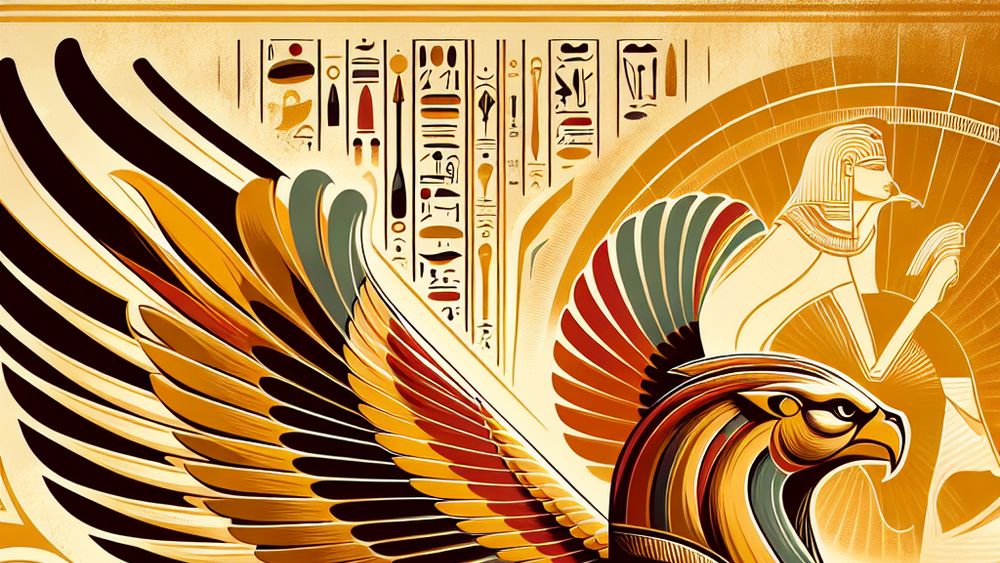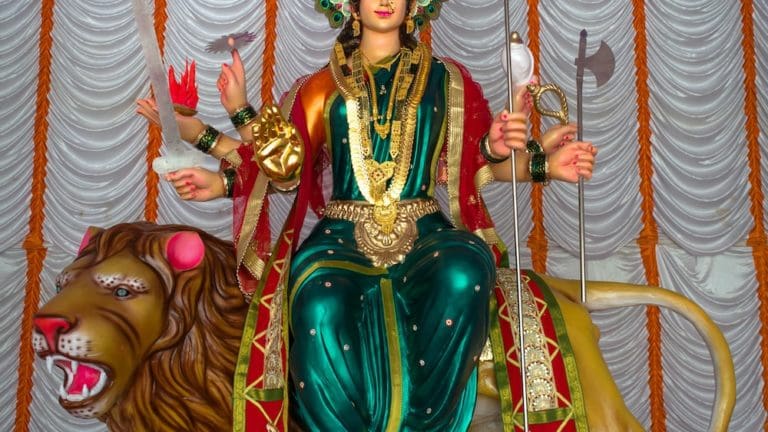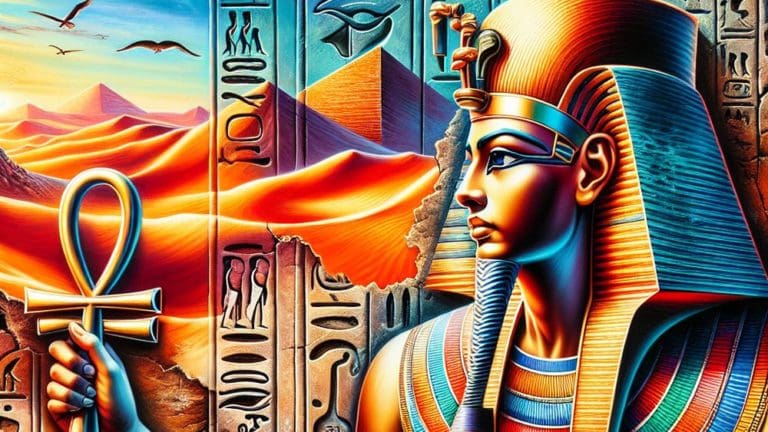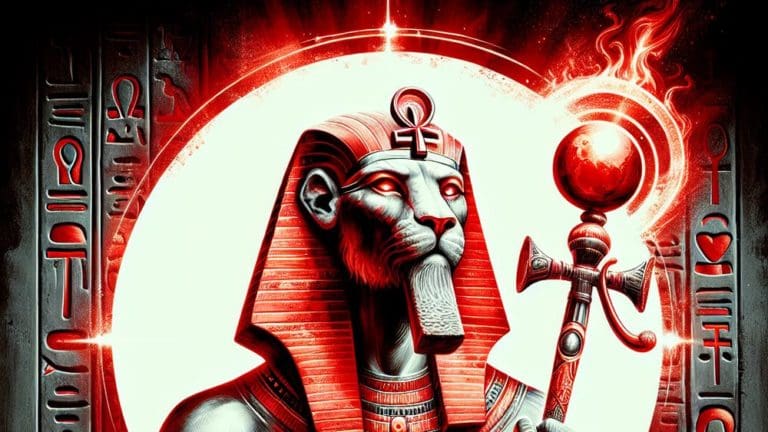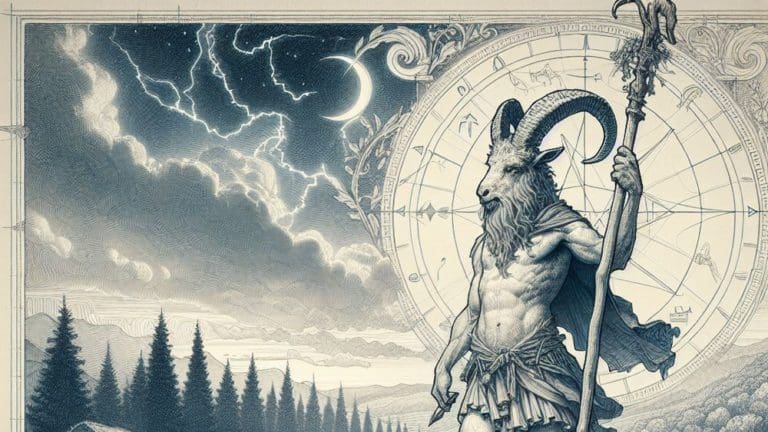Egyptian Mythical Creature: The Hieracosphinx Unveiled!
Egyptian Mythical Creature: The Hieracosphinx Unveiled!
Diving into the enigmatic depths of Egyptian mythology, there’s a creature that stands out for its uniqueness and mystery, the illustrious Egyptian Mythical Creature: The hieracosphinx. This creature, a blend of the majestic and the mythical, captivates anyone who delves into the ancient world. Its allure isn’t just in its appearance, which is stunning by itself, but in the stories and symbols it carries from a civilization long past.
Key Points:
- The hieracosphinx is an Egyptian mythical creature with the body of a lion and the head of a falcon, symbolizing power and wisdom.
- It represents the god Horus, embodying attributes like the sky, war, and protection in ancient Egyptian culture.
- The hieracosphinx is distinguished from other sphinx variants by its unique blend of celestial and royal symbolism.
- In ancient Egyptian art and artifacts, the hieracosphinx is depicted as a guardian figure, often seen in temple reliefs and tomb paintings.
- The hieracosphinx has made its way into modern culture, appearing in literature, film, video games, and contemporary art, showcasing its enduring legacy.
- Its image has evolved to symbolize mystery and ancient wisdom, captivating audiences and bridging the gap between the ancient and modern worlds.
Imagine for a moment, standing in the shadow of the pyramids, the hot Egyptian sun bearing down, and there, carved into the stone, is the figure of the hieracosphinx. It’s a sight that would send shivers down the spine of any history or mythology buff. The hieracosphinx isn’t just any mythical creature; it’s a testament to the creativity and belief of an ancient culture.
The Origins and Mythology of the Hieracosphinx
The origins and mythology of the hieracosphinx take us back to the sands of ancient Egypt, where magic and reality were intricately woven together. This creature symbolizes the power and mystery that ancient Egyptians attributed to their gods and the natural world.
Defining the Hieracosphinx: A Unique Creature of Egyptian Myth
The hieracosphinx is an incredibly unique character in the vast pantheon of Egyptian myths. It is characterized by the body of a lion and the head of a falcon. This specific combination distinguishes it from its more famous cousin, the androsphinx, which has a human head.
Embrace your unique combination of qualities to stand out in a world full of similarities.
Historical Significance and Mythological Origins
Historically, the hieracosphinx stands as a guarded secret, with much of its origin shrouded in the mystery of the sands. Here’s a quick rundown:
- The term “hieracosphinx” is Greek for “falcon sphinx”, pointing to its origins in Hellenistic interpretations of Egyptian culture.
- Unlike the androsphinx, which is more commonly associated with pharaohs and human wisdom, hieracosphinxes are thought to represent the god Horus, a deity with the head of a falcon, symbolizing the sky, war, and protection.
These snippets of history highlight the creature’s deeply entrenched role in the mythology and spiritual landscape of ancient Egypt.

Symbolism and Representation in Ancient Egyptian Culture
In ancient Egyptian culture, the hieracosphinx was more than just a myth or legend; it was a potent symbol. Behold a table that deciphers part of this mystery:
| Symbol | Representation |
|---|---|
| Falcon Head | The sky, higher wisdom, and keen vision |
| Lion Body | Strength, power, and the king of the animal world |
This table showcases how the hieracosphinx was a composite symbol, encapsulating attributes the Egyptians revered in their deities and rulers: power, wisdom, and spiritual guidance.
Distinguishing Features of the Hieracosphinx
The distinguishing features of the hieracosphinx make it stand out in the catalogue of Egyptian mythical creatures. Its unique combination of falcon head and lion body tells a story of divine power and royal authority.
Physical Description and Attributes
The hieracosphinx’s physical form is both mesmerizing and terrifying. Imagine the majestic presence of a lion, the king of beasts, combined with the sharp, keen gaze of a falcon, a bird renowned for its vision and hunting prowess. This combination not only makes the hieracosphinx visually striking but also imbues it with a sense of divine authority and a connection to the celestial.
Embrace the power of combining different strengths to create a presence that exudes authority and divine connection.
Comparison with Other Sphinx Variants
When you dive into the world of mythical creatures, especially Egyptian mythical creatures, you’ll find that the hieracosphinx rocks its own unique vibe. Unlike its cousins, it’s got the head of a hawk and the body of a lion. This combination signifies wisdom and strength, a mix that’s not just cool but also deeply symbolic. So, what makes the hieracosphinx stand out among the rest? Easy. It’s all in the head.
Now, if we line them up – the hieracosphinx, the androsphinx, and the criosphinx – they’ve got a bit of a family resemblance but with key differences. Here’s the breakdown:
- Androsphinx: Head of a human, body of a lion. Think of the iconic Great Sphinx of Giza.
- Criosphinx: Ram-headed, lion-bodied. Symbolizes might and fertility.
- Hieracosphinx: Hawk-headed, brings in a slice of the celestial and the royal.
Each variant has its spotlight in Egyptian mythology, embodying different characteristics and divine connections. But the hieracosphinx? It takes the cake with its fusion of the terrestrial and the divine, showcasing a level of mystique the others just can’t touch.
The Hieracosphinx in Hieroglyphs and Ancient Artifacts
Ever wonder how the ancient Egyptians showcased their love for the hieracosphinx? Let me tell you, it was no small deal. They carved, painted, and inscribed this mythical creature with a finesse that’s both awesome and intriguing. Mostly, you’d find the hieracosphinx guarding temples or in burial artifacts, serving as protectors of sacred spaces and the afterlife. It’s like they were saying, “This place is under hieracosphinx watch. You’re in safe hands.”
So, what evidence do we have of the hieracosphinx in ancient times? Let’s lay it out:
| Artifact Type | Description | Significance |
|---|---|---|
| Temple Reliefs | Hieracosphinx forms flanking entrances | Guarding sacred spaces |
| Tomb Paintings | Depictions beside deities and pharaohs | Association with royalty and divine |
| Sculptures | Small to life-sized statutes | Symbolic protection, divine watchfulness |
Through these artifacts, the hieracosphinx wasn’t just a creature of myth but a symbolic guardian woven into the very fabric of ancient Egyptian daily life and afterlife beliefs. It’s amazing how art can bridge worlds and time, showing us the reverence the ancient Egyptians had for this unique creature.
The hieracosphinx served as a symbolic guardian in ancient Egyptian life and beliefs, depicted through various artifacts with a role of protection and watchfulness.
The Hieracosphinx in Modern Culture and Media
The hieracosphinx might hail from ancient times, but guess what? It’s totally found its way into our modern-day culture and media. It’s like it never really went out of style. From literature to movies, video games to digital art, this Egyptian mythical creature keeps popping up, making cameos and even starring roles. It’s the kind of longevity most myths dream about.
The Hieracosphinx in Literature and Film
In literature and film, the hieracosphinx often plays the mysterious guardian or symbolizes an ancient wisdom that characters seek. There’s something utterly captivating about introducing this creature from Egyptian mythology into stories set in our world or imagined ones. It adds depth, blending the ancient with the modern in ways that both entertain and enlighten.
Movies like “The Mummy” franchise tease with elements of Egyptian mythology, bringing creatures like the hieracosphinx into the limelight, albeit sometimes subtly. And then there are the books – fantasy novels where the hieracosphinx becomes a majestic creature that characters might encounter on their quests, offering knowledge, guiding, or sometimes presenting challenges. It’s this awesome bridge between worlds that truly highlights the hieracosphinx’s timeless allure.

Representation in Video Games and Digital Media
In the realm of video games and digital media, the hieracosphinx isn’t just hanging around; it’s stealing the show. Game developers and digital artists have a field day incorporating this awesome creature into their worlds, making it a part of epic adventures and challenges. Here’s where you might have seen one:
- Assassin’s Creed Origins: Prowling the landscapes of ancient Egypt, adding to the game’s rich historical tapestry.
- Smite: As a character with mythical powers, battling it out with gods and creatures from various mythologies.
- Digital Art platforms: Where artists reimagine the hieracosphinx with modern twists, still keeping its majestic essence.
These representations keep the hieracosphinx alive in the digital age, allowing a whole new generation to marvel at and engage with this piece of ancient mythology. It’s a testament to the hieracosphinx’s enduring legacy and cultural impact.
The Hieracosphinx in Contemporary Art and Design
In contemporary art and design, the hieracosphinx takes on new forms, proving it’s not just a relic of the past but a source of inspiration for today’s artists and designers. Whether it’s statues in modern gardens or prints on trendy fashion items, the hieracosphinx is having a moment.
Artists draw on its symbolism – blending power and wisdom – to create pieces that speak to our times. Designers, on the other hand, use its striking image for everything from jewelry to home décor, showing that ancient symbols can totally rock a modern aesthetic. The hieracosphinx, with its rich mythical background, serves as a bridge, inviting us to explore and reinterpret its significance in new and exciting ways.
Ancient symbols like the hieracosphinx are being creatively reimagined and integrated into modern art and design, showcasing a blend of power, wisdom, and contemporary relevance.
FAQs
1. What distinguishes a hieracosphinx from other types of sphinxes?
What distinguishes the hieracosphinx from other types of sphinxes is its unique combination of a lion’s body and a falcon’s head, unlike the human-head-on-lion’s-body of the more famously known Great Sphinx of Giza. This merge of predator features symbolizes both royalty (falcon, representing Horus, the sky god) and strength (lion, a common symbol of power).
2. How did the hieracosphinx influence ancient Egyptian culture?
The hieracosphinx influenced ancient Egyptian culture by acting as a guardian figure, often placed at the entrances of temples. Their intimidating presence was believed to ward off evil spirits, showcasing the importance of protection and the preservation of sanctity in religious spaces.
3. Can the hieracosphinx be found in any historical texts or artifacts?
Yes, the hieracosphinx can be found in historical texts and artifacts, where they are depicted in hieroglyphs and statuary. These representations further emphasize their role in Egyptian mythology and rituals as protectors and symbols of divine power.
4. How has the image of the hieracosphinx evolved in modern times?
The image of the hieracosphinx has evolved in modern times to become a symbol of mystery and ancient wisdom. It is often featured in books, movies, and games, sparking curiosity and fascination with the ancient world and its mythological creatures.
Conclusion
This deep dive into the world of the hieracosphinx highlights not only its uniqueness among Egyptian mythical creatures but also its significant impact on culture, both ancient and modern. The fusion of a falcon’s head with a lion’s body encapsulates the rich symbolic texture of Egyptian mythology, where animals were not just creatures but bearers of divine attributes. Through understanding the hieracosphinx, we gain insights into how ancient Egyptians viewed the world around them, integrating nature, divinity, and the afterlife into a coherent, vivid tapestry that still fascinates us today. Indeed, learning about Egyptian Mythical Creature: The hieracosphinx not only feeds our curiosity about the past but also enriches our cultural imagination.
Thanks for joining me on this awesome journey through mythology and history. Catch you next time for more fascinating stories!
With enthusiasm,
Cedric

